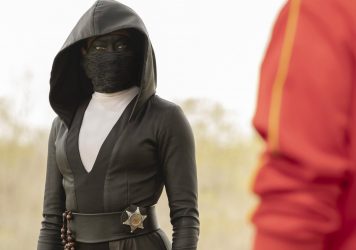
The Wikipedia article titled “Versions of Justice League,” something one might expect to occupy a brief explanatory subhead in the proper Justice League entry, is very long. It comprises thousands of words and over one hundred and fifty footnotes, because that’s just what it takes to fully elucidate the recent brouhaha surrounding the #ReleaseTheSnyderCut campaign.
Zack Snyder remains the sole credited director of 2017’s superhero extravaganza Justice League, but he parted ways with the production midway in the spring of that year, taking some well-deserved time following the death of his daughter. Warner Bros. brought in Joss Whedon, a cowriter of the Justice League script and an old hand at capes-and-tights crossovers from his time spent on The Avengers, to do some patch-up directing and complete the final edit.
When the film debuted later that year, a small faction of nonetheless extremely vocal fans perceived a sense of creative compromise that they traced back to the tainting influence of Whedon. With memories of the embattled Superman II fresh in their heads (an affair in which original director Richard Donner was ousted and replaced by a studio-sanctioned substitute, completing his personal edit only after years of legal battles), this grassroots movement dedicated itself to bringing the rumored “Snyder Cut” into the light of day.
As film-restoration activist efforts go, this one has shakier foundations than most; for one, the mere existence of a “Snyder Cut” is predicated on hearsay, mostly from parties involved with the production that offer conflicting accounts of its done-ness. (This can all be found on the exhaustive Wikipedia article.)
Moreover, the fandom’s read of the situation assumes an animosity between Snyder and Warner Bros that has never been proven, the notion that he wanted a dark and gritty take on the material until the studio wrested control and brightened everything up as a response to the dismal reception of Batman v Superman. He did, after all, parts ways with the film of his own volition.
What started as a knee-jerk reaction to possibly imagined studio meddling has mutated into something stranger and more aggressive, as evidenced by the scores of tweets imploring Warner Bros to “#ReleaseTheSnyderCut” found as replies to anything the studio’s official account might post. And then there’s the “The Time Has Come,” a novelty song billed as “The Official Release The Snyder Cut Anthem.”
Those following showbiz news have kept an eye on this evolving story over the past two years, but it took a dramatic turn earlier just yesterday, when actors Ben Affleck, Gal Gadot, and Ray Fisher all posted coordinated tweets calling on Warner Bros. to, you guessed it, #ReleaseTheSnyderCut. Snyder then gave his authorized approval with a pair of tweets co-signing Affleck and Gadot’s sentiments.
This represents the strongest suggestion yet that the Snyder cut may very well exist, though what appears to be a collective decision to rally the public instead of going through their contacts at Warner Bros hints at friction. If releasing the Snyder cut was as simple as negotiating with the current rights holders, that would be that. But the Twitter campaign suggests a need to prove that real people would actually be into this, that what seemed like a fringe concern has actually spread to the mainstream.
Warner Bros won’t put a tweaked version of Justice League back in theaters unless they can be sure it’ll make money, so for the Snyder faithful, this will be the greatest test of their devotion. Can they convince the rest of Hollywood to take them seriously?
Published 18 Nov 2019

He reinvented the comic-book movie. He filmed the unfilmable. So why doesn’t the Batman V Superman director get respect?

The director’s vision of Gotham City remains one of blockbuster cinema’s greatest creations.

HBO’s remix of Alan Moore’s graphic novel is a strange, complicated beast – and all the better for it.